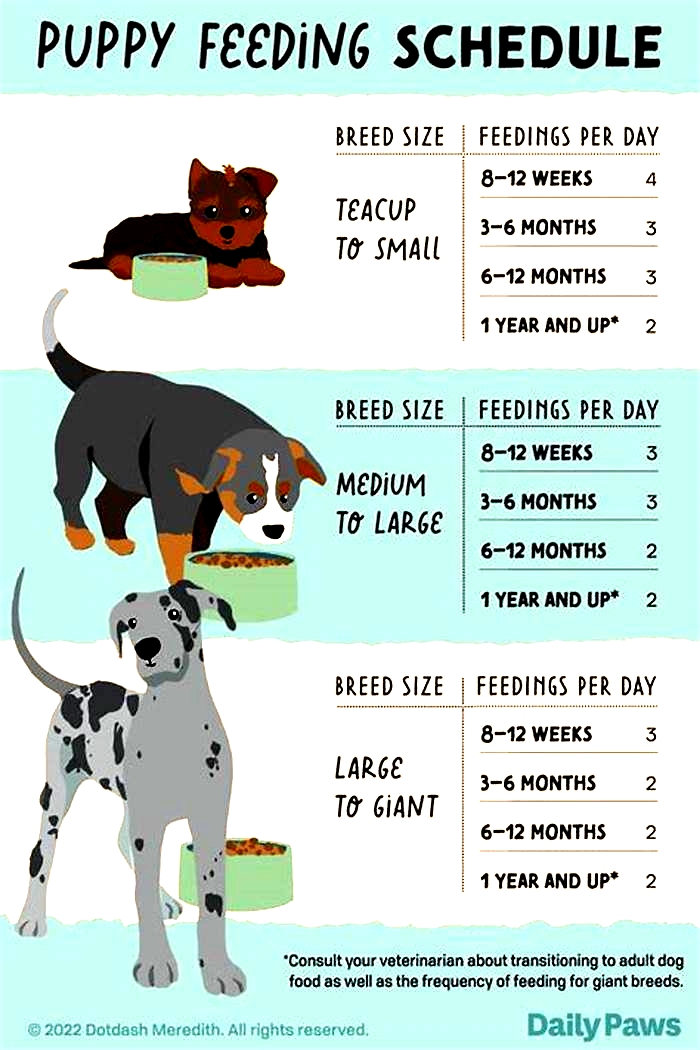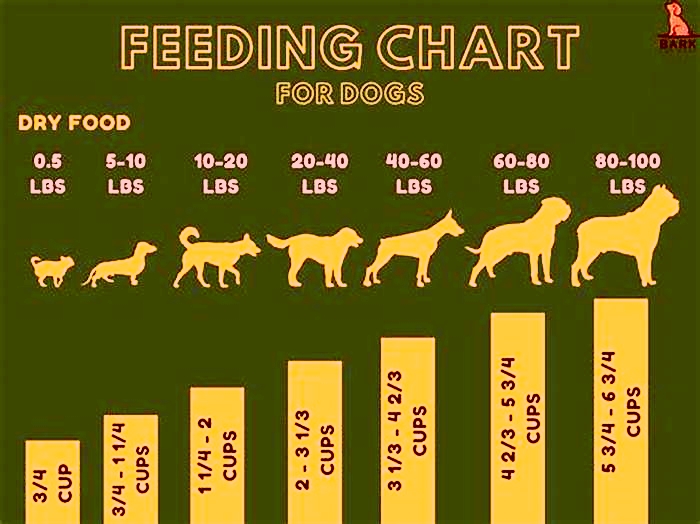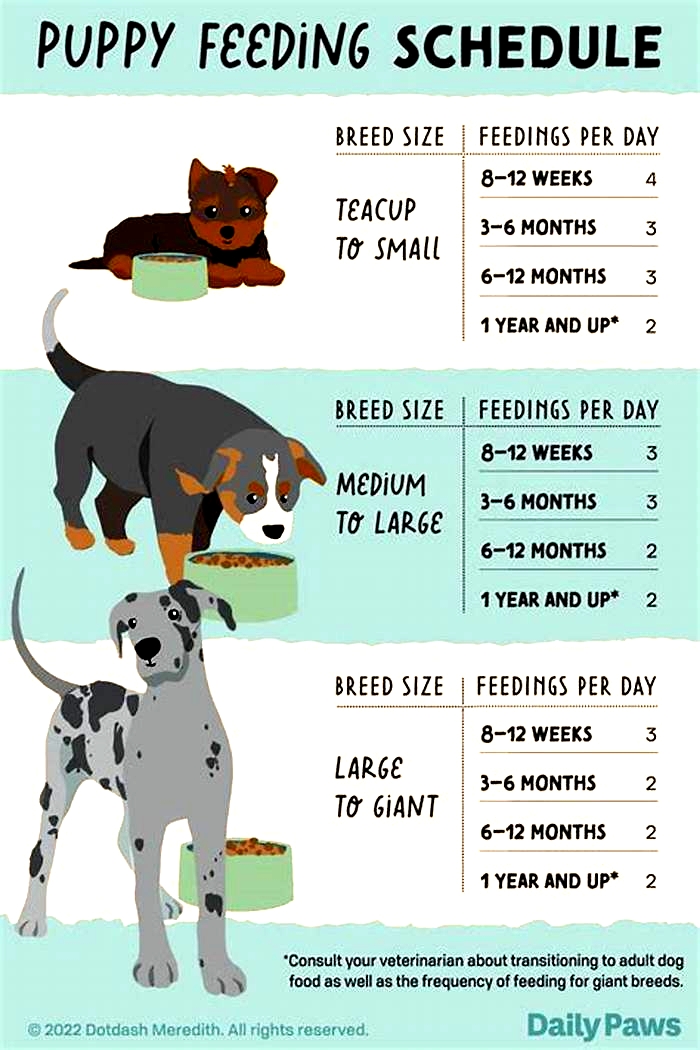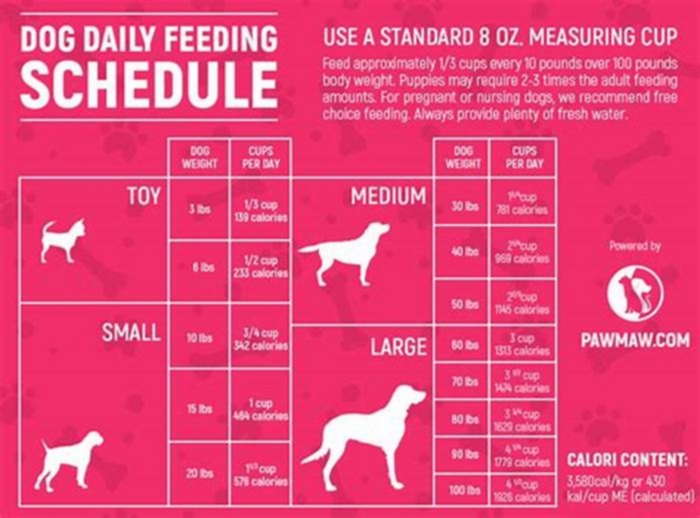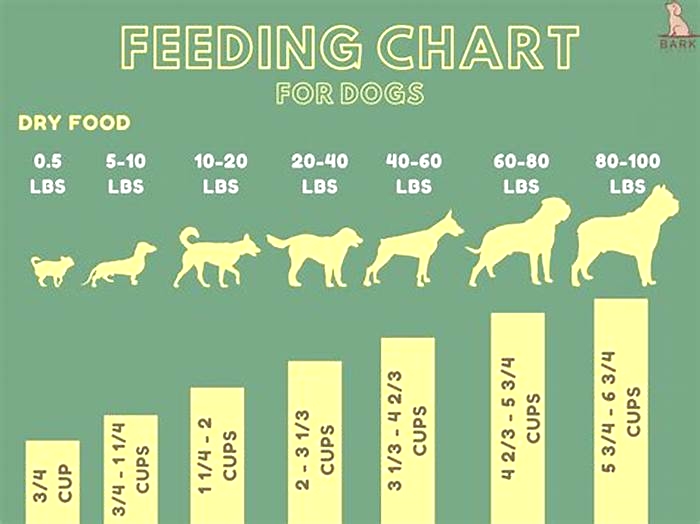How many times a day should a dog eat
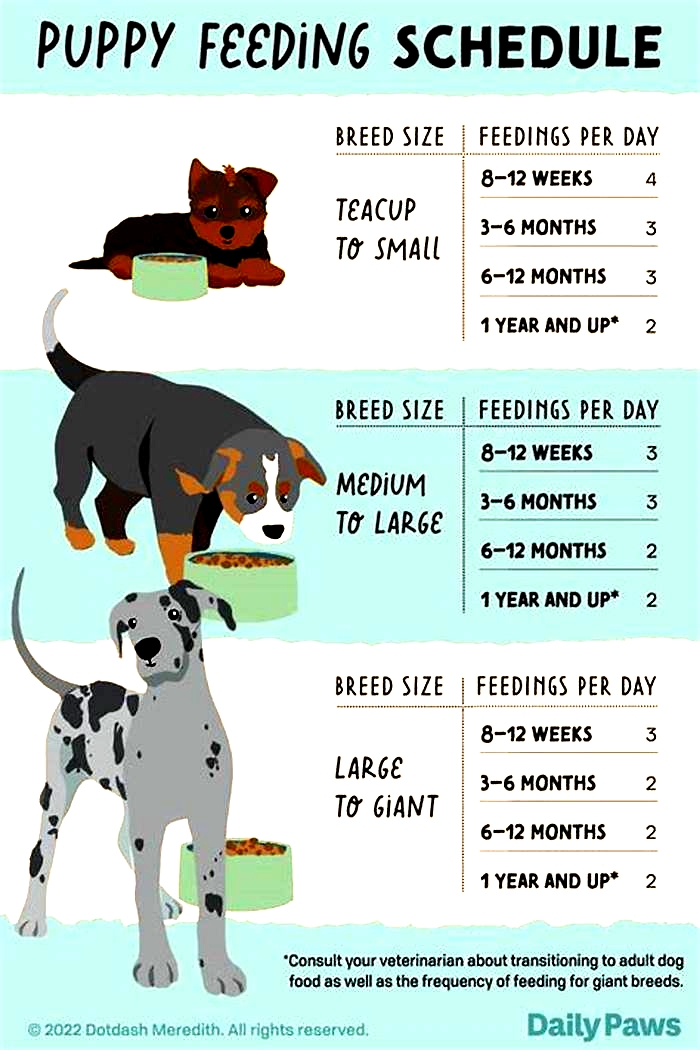
Dog feeding schedule: How many times a day should a dog eat and how much?
Some pooches will eat all day if you let them but creating a dog feeding schedule is a good step forward. Not only will you be able to better work out how many times a day a dog should eat and how much they should have, it will also be more difficult to forget to dish out a meal.
In this guide, were going to look at the different schedules needed for adults and puppies. Well also answer the question, how much should I feed my dog? and help you with the math to find your dogs ideal portion size.
The idea is that you will have a schedule which ensures your dog will achieve a healthy ideal body weight and have all of the nutrients required. After all, its not simply a matter of emptying the best dry dog food or the best wet dog food into a bowl. Each dog is different and dog food has a different calorie content.
So lets look at how you can create a dog feeding schedule with expert advice from veterinarian Elizabeth Racine.
How many times a day should a dog eat?
Adult dogs
How many times a day a dog should eat depends on the dogs age, breed, and any health conditions the dog may have. In general, a healthy adult dog should eat at least twice a day.
However, there are many reasons why a dog may need to eat more frequently throughout the day. Dogs with certain health conditions such as megaesophagus, inflammatory bowel disease (check out our guide to IBD in dogs for more on this), or even just a sensitive stomach, may benefit from eating smaller, more frequent meals throughout the day, rather than two large meals.
Some dogs are also prone to vomiting if their stomach is empty for long periods, a condition known as bilious vomiting syndrome. In these dogs, more frequent meals can help reduce the vomiting.
Puppies
Growing puppies also need to be fed multiple times throughout the day to meet their high calorie needs. Weaned puppies should continue to eat at least three times per day until they reach 6 months of age, at which point they can be gradually transitioned to twice a day feedings if the owner is so inclined.
Small breed puppies, however, may need to continue to have multiple feedings throughout the day, particularly if they are prone to hypoglycemia, or low blood sugar.
How much should a dog eat?
This is a difficult question to answer, because there is no single answer that can be applied to all dogs. As you can imagine, a Great Dane must eat a very different amount than a Chihuahua.
Dog foods also contain different amounts of calories depending on their brand and variety. In order to determine how much your dog should eat, we would need to know your dogs age, breed, current weight and body condition, and the caloric content of the food you are feeding.
Without this information, it is impossible to tell you exactly how much your dog should be eating we simply dont know!
1. Calculate your dogs daily calorie requirement
To find out exactly how much your dog should be eating, the best thing to do is ask your veterinarian to calculate your dogs daily calorie requirement. To do this, your veterinarian will use a formula that takes your dogs current body weight into account to find your dogs resting energy requirement, or RER.
This number is then multiplied by a factor depending on your dogs age, spay/neuter status, and body condition. The resulting number is a good approximation of your dogs daily calorie requirements.
If your dog is a healthy adult and is at an ideal body weight, you can also use the World Small Animal Veterinary Associations Calorie Ranges chart to help determine how many calories your dog should eat in a day. This is just a rough estimate, but it can be a good starting point when you are trying to figure out how much to feed your dog.
Remember this chart is only intended for healthy adult dogs of ideal body weight, and should not be used for growing puppies or dogs that are over or underweight, as these dogs have different calorie needs.
2. Divide the calories
Once you know how many calories your dog needs in a day, you can determine how much to feed your dog. First, divide the calories across the number of meals youd like to feed in a day. Then, check the back of your dog food bag or can to find the calorie content, which is usually somewhere near the nutritional information.
Divide the number of calories per meal by the number of calories in a cup of dry food or a can of wet food, and youll find the exact amount to feed your dog at each meal.
How do I know my dog is eating enough?
A great way to evaluate the effects of your dogs diet is monitoring your dogs body condition score. A body condition score is a subjective evaluation of your dogs fat deposits to determine whether he or she is underweight, overweight, or ideal.
When evaluating your dogs body condition score, pay close attention to the amount of fat over the dogs ribs and the shape of the waist and abdomen. This will help you determine whether or not your dog falls into the ideal range. You can learn more about how to body condition score your dog with the World Small Animal Veterinary Association's Body Condition Score Chart.
If your dog falls into the ideal range, youve done a great job! Your dog is eating enough and is a healthy, lean body weight. Keep doing what you are doing so that your dog will stay in this healthy range.
Tackling unhealthy body weight in dogs
If your dog falls in the underweight range, its best to consult with your veterinarian to ensure he is on an appropriate diet and receiving enough calories daily.
If your dog falls into the overweight range, youre not alone. In 2018, 59.5% of cats and 55.8% of dogs were classified as overweight or obese, according to the Association for Pet Obesity Prevention.
You can help your dog shed the pounds by reassessing his calorie goals (if you havent already, ask your veterinarian to calculate a precise daily calorie goal for your dog), cutting back on treats and table scraps, and reducing portion sizes.
How to feed a dog for optimum health
Feeding your dog the right amount is important to maintain a healthy lean body weight. For healthy adult dogs, twice daily feedings are recommended. Learning how many calories to feed your dog and how to monitor your dogs body condition score will help you ensure that your dog is getting the right amount of food every day.
How Many Times a Day Should a Dog Eat?
This post may contain affiliate links. If you click and buy we may make a commission, at no additional charge to you. Please see our disclosure policy for more details.
Dog owners especially new owners often wonder how often they should feed their dog.
Unfortunately, theres not a one-size-fits-all answer to how many times a day a dog should eat, as the best dog feeding schedule varies from one dog to the next.
However, well provide a few general recommendations and explain some of the most important factors to consider when determining how much to feed your dog.
How Many Times a Day Should a Dog Eat?
Generally speaking, most dogs should be fed between one and three times each day. However, there are a number of exceptions, and youll need to consider a variety of factors when trying to determine the optimal feeding schedule for your pet.
Some of the things youll want to consider include:
1. The Age of Your Pet
Simply put, puppies and younger dogs require more frequent meals than older dogs do.
Puppies should typically be fed three to four times each day, or about once every three to five hours.
On the other hand, adult dogs will usually thrive on a twice-daily feeding schedule, with the meals spaced about 8 to 12 hours apart.
Some owners feed adult dogs once per day, but this may cause your dog to become quite hungry between meals, and it can be challenging for some dogs to ingest their entire daily food allotment in a single meal.
Most senior dogs will thrive best on a twice-daily feeding schedule.
SEE ALSO: Best Senior Dog Food for Large Breeds
2. The Health Status of Your Pet
Healthy adult dogs will generally adjust to a twice-daily feeding schedule, but you may need to alter this to accommodate any health concerns your dog has.
For example, diabetic dogs may require strict feeding schedules that require multiple, smaller meals each day, and dogs whove experienced bloat (as well as those who are predisposed to the condition) should also be fed very small meals spread throughout the day.
Similarly, if your dog needs medications that should be taken with food, you may have to alter his feeding schedule so that it matches up with his dosing schedule.
A number of other health problems, including bilious vomiting syndrome a condition in which dogs routinely vomit stomach acid may also require you to feed your dog several small meals each day, rather than one or two large meals.
Just be sure to discuss your dogs feeding schedule with your vet if your pet suffers from any serious health problems.
3. Your Pets Activity Level
Your dogs food obviously provides him with the energy necessary to run, jump and play, so youll need to factor in his activity level when determining a proper feeding schedule.
In most cases, highly active breeds and individuals will require more food than sedentary dogs, and theyll need to have the chance to eat more often than their sedentary counterparts as well.
This is especially true for working, hunting, tracking and competing dogs, but even typical pets may exhibit high activity levels that require adjustments to their feeding schedule.
Generally speaking, youll want to feed highly active dogs at least twice per day, and some may require three meals every 24 hours.
RELATED: The 4 Best Dog Foods for Weight Gain
4. Your Pets Body Weight
If your dogs body weight is outside of the typical range for the breed, you may need to alter his feeding schedule. For example, youll often find it necessary to reduce the amount of food provided to overweight dogs in an effort to help them lose weight.
But, because you dont want your pet walking around in a famished state all day, youll want to offer smaller, more frequent meals. So, dogs who are trying to lose weight will often require three meals each day.
On the other hand, dogs who need to gain weight are usually encouraged to eat more food than normal.
One of the best ways to do so is to implement an ad libitum also known as free-choice feeding schedule.
To do this, youll simply fill a bowl to the brim with dog food, and allow him to eat at his leisure. Just be sure that you still wash your dogs food bowl regularly dont just keep adding new food to the bowl each day.
5. Your Typical Daily Routine
It is also important to factor in your work or school schedule when determining the optimal feeding schedule its hard to feed your dog when youre not home.
Most owners will find it possible to simply feed their dog in the morning before leaving, and then once again upon returning home. However, if you have a mid-day break that allows you to drop by your house, you may be able to implement a thrice-daily feeding schedule, if thats more suitable for your pet.
Its also important to consider your dogs typical day when deciding on a feeding schedule. For example, if you take your dog to play fetch at the park every morning, youll want to make sure that you dont feed your dog right before heading out the front door.
But, you also want to make sure your dog isnt forced to remain hungry for hours upon returning. In such cases, youll probably want to be sure to feed your pet at least one to two hours before your typical trip to the park.
How Much Should I Feed My Dog?
When determining the proper feeding schedule for your dog, youll also need to be sure that you are providing your pet with the right quantity of food.
Otherwise, you may prevent your dog from ingesting enough calories, or, conversely, you may provide him with too much food, which can cause him to gain weight unnecessarily.
The best way to determine the number of daily calories your dog needs is by consulting your vet. Only your vet can factor in the myriad factors that go into determining the ideal amount of food your dog needs.
However, you can get a ballpark idea by implementing the following formula:
- Weigh your dog. Use kilograms if possible, but if you must weigh him in pounds, divide the result by 2.2 to obtain his weight in kilograms.
- Take this number and raise it to the power of 0.75
- Multiply the resulting figure by 70
The resulting number is your dogs resting energy requirements (RER). This is the number of calories your dog needs to keep his lungs inflating and heart beating it does not include the energy your dog needs to remain active, nor does it provide enough to fuel growth or reproduction.
To account for these energy demands, youll need to determine your dogs maintenance energy requirement (MER). Your pets MER represents his totalcaloric needs.
To determine your dogs MER, youll need to use any of several multipliers. Some of the most commonly used multipliers include:
| Circumstance | Multiplier |
| Neutered Adults | 1.6 |
| Intact Adults | 1.8 |
| Dogs Who Must Lose Weight | 1 |
| Dogs Who Must Gain Weight | 1.7 |
| Working Dogs | 2 to 6 |
| Growth | 2 to 3 |
After multiplying your dogs MER by the correct value from the chart above, youll be left with an approximation of your dogs daily caloric needs.
Youll then need to check the label on your dogs food to see how many calories are in each cup. Typical dog foods have between 250 and 500 calories per cup.
So, if you have a 90-pound Golden Retriever, you know that he weighs 41 kilograms.
The RER of a 41-kilogram dog is about 1358 calories. Assuming that he is neutered, his MER will be 2150 Calories.
If his dog food contains 400 calories per cup, hell need approximately 5 1/3 cups of dog food each day. Accordingly, if you want to feed him twice a day, each meal should be a little more than 2 cups.
In the broadest terms, most dogs will need approximately the amount of food indicated below:
Dogs Weight | Approximate Daily Food Needs |
| 40 pounds | 2.25 to 3 cups |
| 60 pounds | 3 to 4 cups |
| 80 pounds | 3.50 to 5 cups |
| 100 pounds | 4.25 to 6 cups |
Options for Owners Who Are Frequently Away from Home
As mentioned above, it can be tricky to feed your dog several times per day if you spend long periods of time away from home.
Unless you are implementing a free-choice feeding protocol, you dont want to simply leave a bowl of food out all the time this may cause dogs to gain weight. And, if you dont do so carefully, you may end up attracting bugs and rodents by leaving a bowl of food out at all times.
However, there is a solution: You can simply use an automated dog feeder. Automated dog feeders provide your dog to a predetermined amount of food at predetermined times. Many even emit an audible tone at feeding times, so that your dog knows when dinner is served.
Weve written about the best automatic dog feeders before (and we even recommend several of the best options available on the market). Be sure to give that article a glance if you struggle to keep your dog fed while you are away from the home.
How Can I Tell If Im Overfeeding My Dog?
Its important to realize that the figures provided above are only approximations.
You must be careful to monitor your dog over time (and consult regularly with your vet) to ensure that he is getting the proper amount of food. You dont want him to become overweight, as excess body weight predisposes dogs to a number of health problems.
Somesigns that you are feeding your dog too much food include the following:
- You cant feel your dogs ribs when you press firmly on his sides
- Your dog has poor definition and a rounded body shape
- Your dog has a hard time bending to groom themselves
- Your dog pants frequently, even when theyre not exercising
- Your dog lacks the agility he formerly had
- Your dog experienced frequent constipation
- Your dog falls behind and struggles during walks
- Your dog is lethargic or depressed
If you note any of these symptoms, contact your vet and inquire about reducing the amount of food provided.
How Can I Tell If Im Underfeeding My Dog?
Just as it is important to avoid overfeeding your dog, you must be sure to avoid underfeeding your dog too you dont want your pet walking around hungry all the time.
Accordingly, youll want to be sure to watch for the following signs and symptoms that may indicate your dog is losing weight:
- Your dogs ribs are visually apparent (you can count them by looking or with a light touch)
- Your dogs hips or spine have become visually apparent
- Your dog struggles to remain warm
- Your dog begs for food more often or more enthusiastically than usual
- Your dog experiences frequent constipation or fails to exhibit a regular elimination schedule
- Your dog lacks the energy he formerly displayed
SEE ALSO: 11 Reasons Your Dog Wont Eat (And What to do About It)
Final Word: Quality Matters Too
While it is clearly important to feed your dog an appropriate amount of food and, as weve primarily discussed here, to provide this food on a reasonable schedule, it is also critical that you provide your dog with a nutritious and safe food.
So, be sure to check out our review of the best dog food for large breeds. There, we not only provide recommendations for the best options for large-dog owners, but we also explain some of the most important things you need to consider when picking a dog food.
You May Also Like
5 Best Elevated Dog Feeders for Large Breeds: Making Chow Time Easier for Your Canine
How Long Can a Dog Go Without Food? When to Worry
The Best Large Breed Puppy Food: Big Nutrition for Your Big Canine
10 Best Homemade Dog Food Recipes for Large Dogs
Forrest is a lover of dogs, the wild outdoors, deep mysterious conversations and coffee. He is the owner of several websites, including Canine Weekly. He resides in Austin, Texas.

